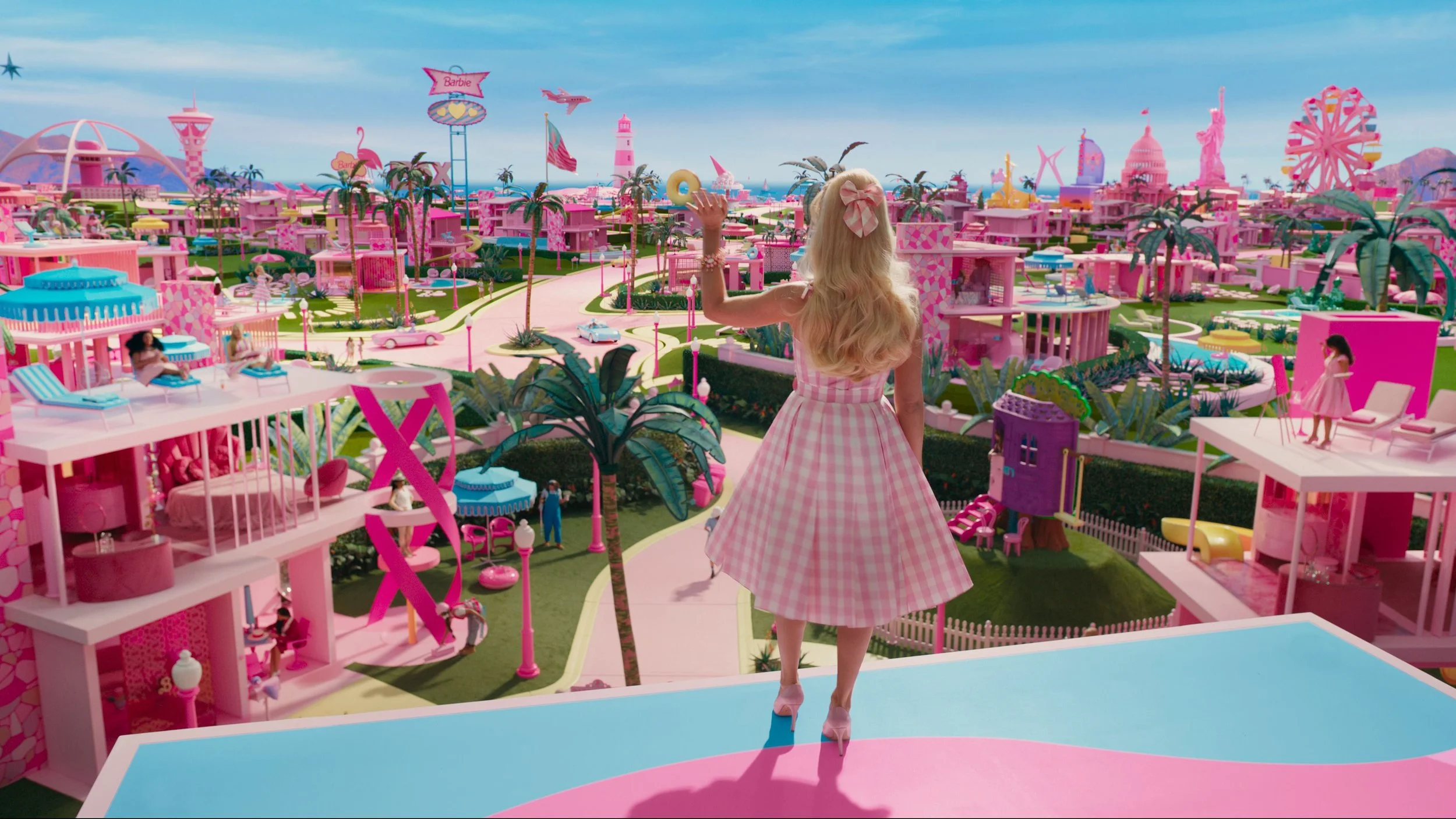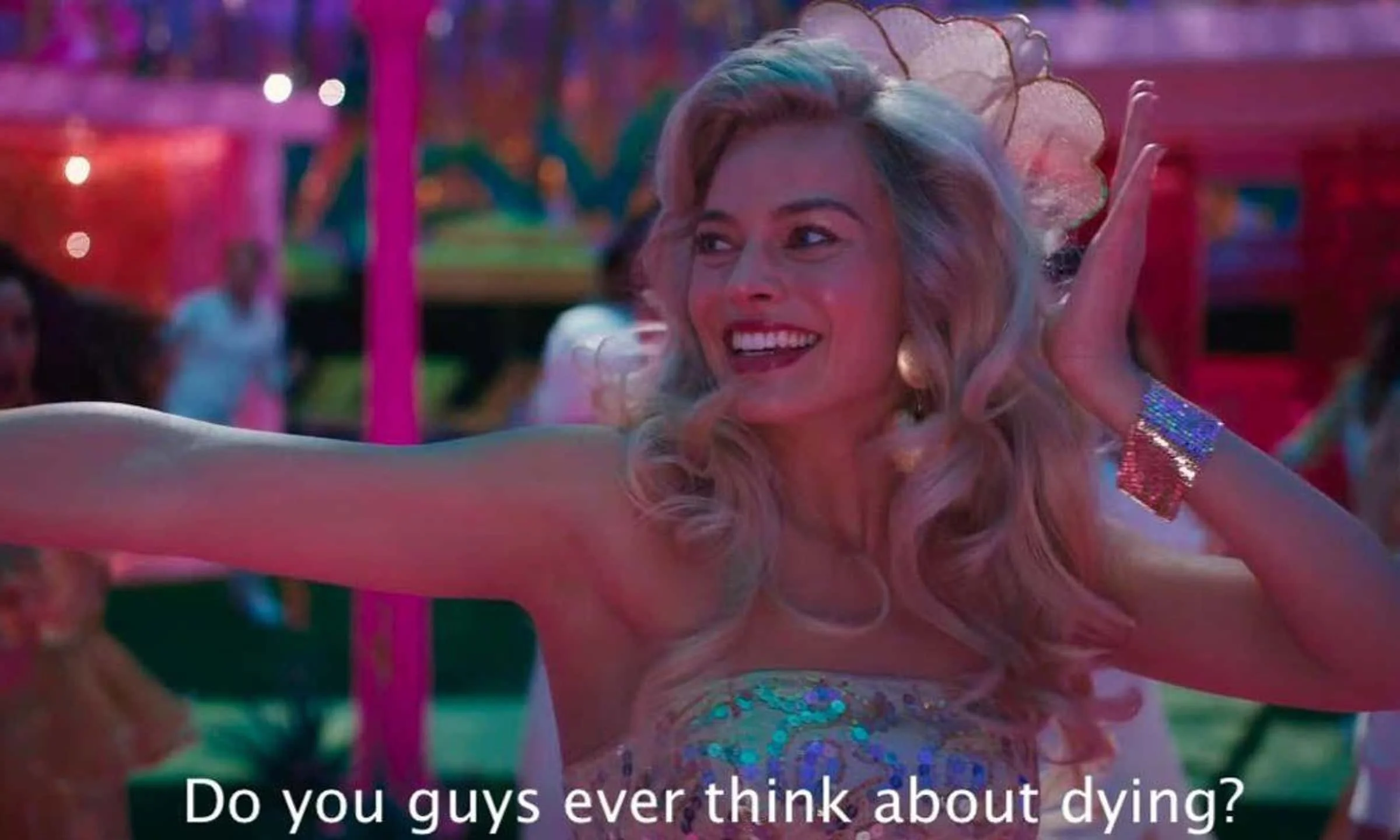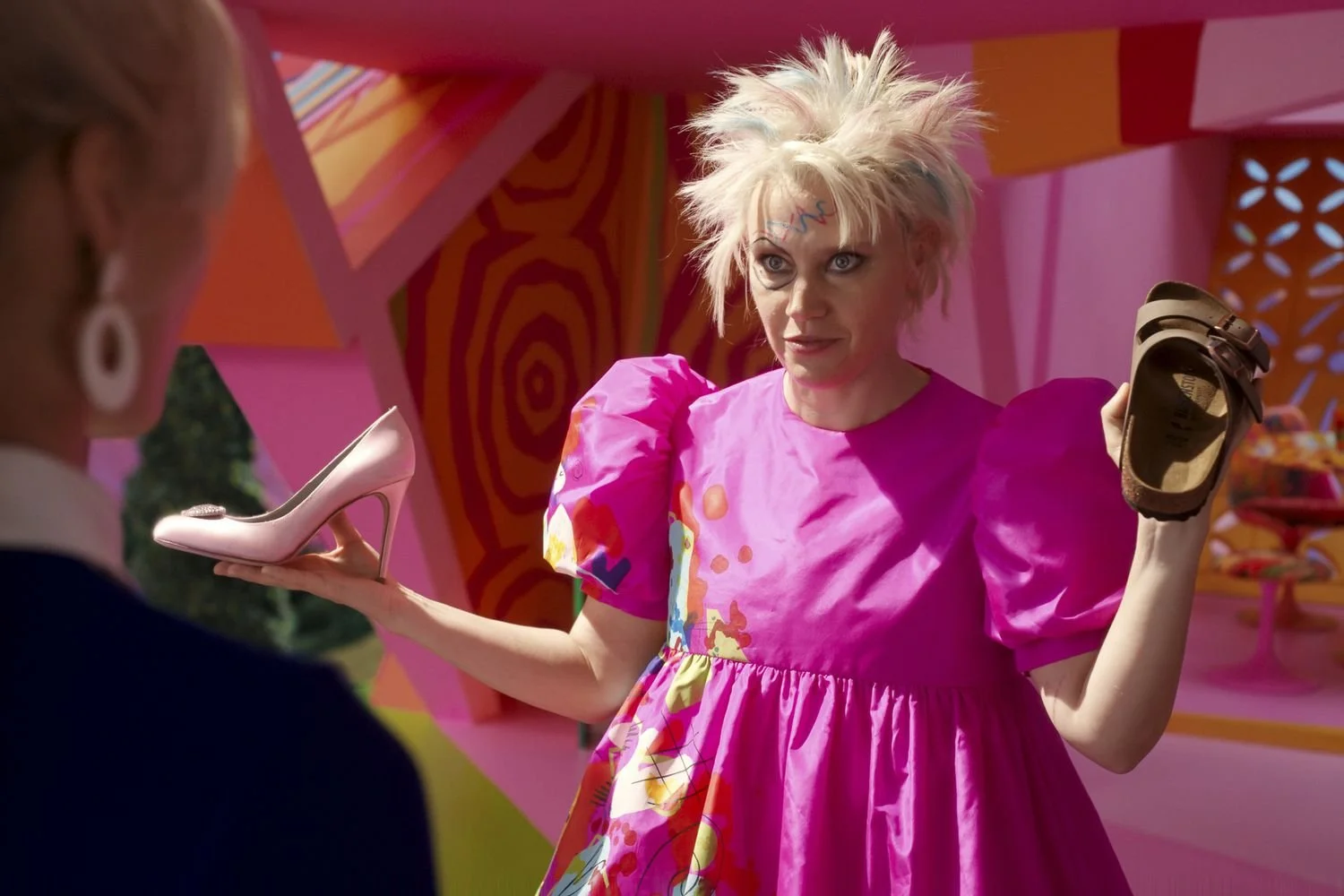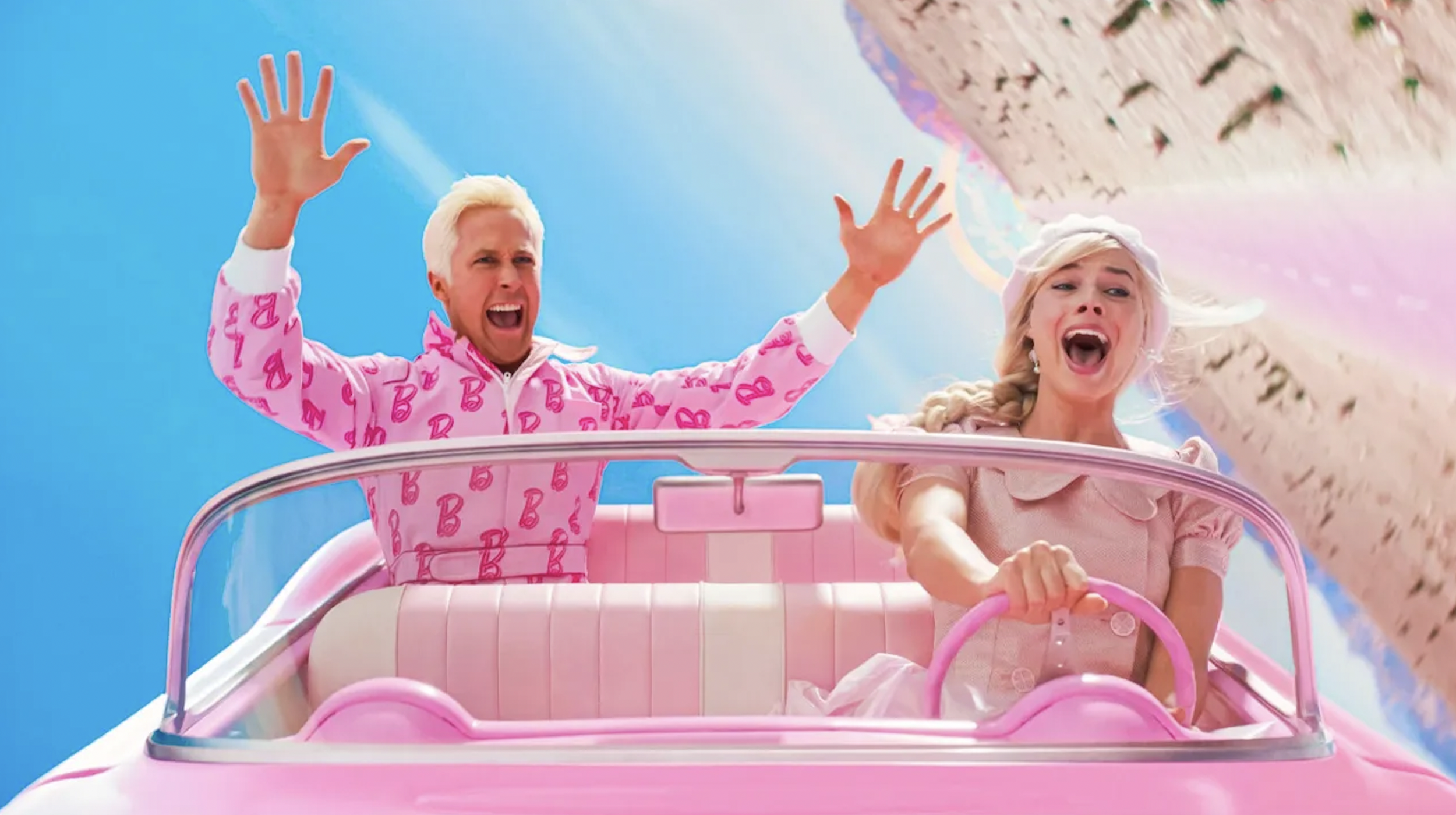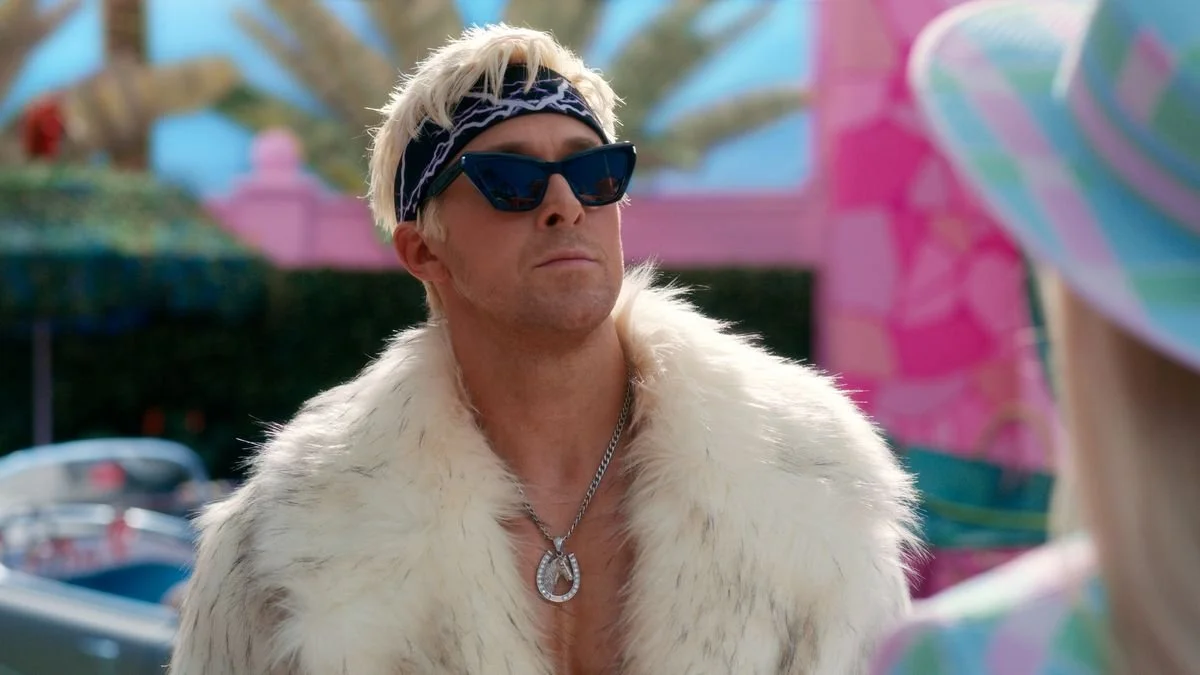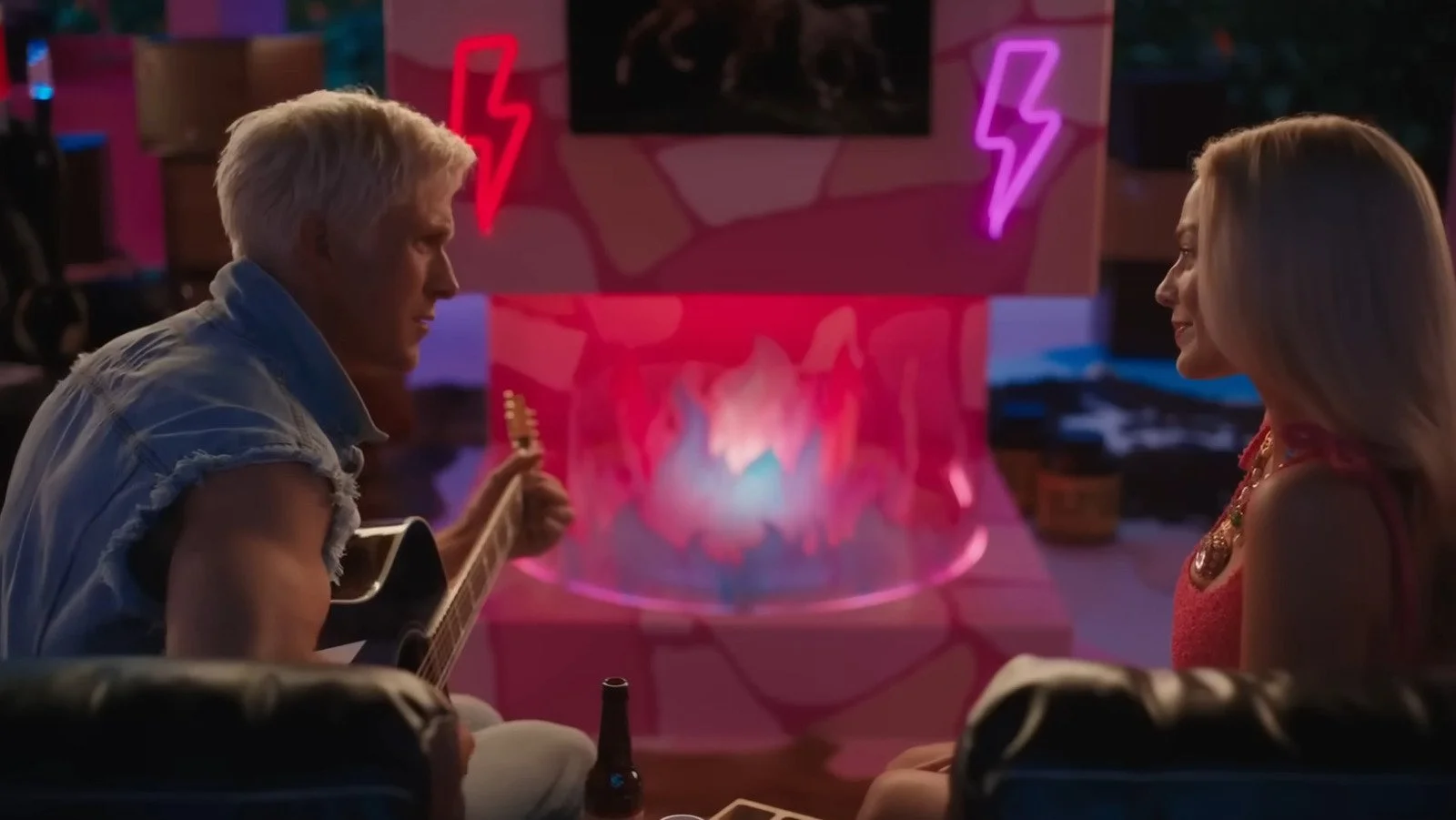Why The "Barbie" Movie is the Perfect Example of the Hero's Journey
Just because she’s blonde and has a perfect smile and an amazing DreamHouse doesn’t mean she can’t also be a Hero. With a capital H. When I saw Greta Gerwig’s masterpiece, Barbie, for the first time, I left the theater feeling positively thrilled.
Yes, fine, that thrill was partially because of America Ferrera’s rousing speech about what it means to be a woman, that incredible Depression Barbie commercial, and the Ken dance number in Act Three.
But it’d also been a long time since I saw a movie with a good Hero’s Journey structure, and I was thrilled that an unsuspecting movie like Barbie so perfectly exemplified this classic storytelling concept.
WHAT IS THE HERO'S JOURNEY?
The Hero’s Journey is a structural storytelling concept known as the “monomyth.” First introduced by Joseph Campbell in a detailed 17-step template in which a Hero ventures from the known to the unknown, deals with some kind of major challenge, and returns home transformed. The Hero’s Journey was eventually popularized by Christopher Vogler, a Hollywood producer who wrote up a company memo that explained and condensed Campbell’s monomyth structure into 12 phases.
For this piece, I have used Vogler’s 12 steps, though I’m confident that this analysis of Barbie could be expanded to fit Campbell’s more detailed structural breakdown.
BARBIE'S HERO JOURNEY
ORDINARY WORLD
In the first part of any Hero’s Journey story (any story at all for that matter), the Hero is introduced in their ordinary world. We see the Hero — also known as the Main Character or Protagonist — in their everyday life and are presented with some context and background to get the story going.
Barbie begins with a voiceover introduction courtesy of Dame Helen Mirren that explains how Barbie came to be. We see that there’s the Real World and there’s Barbie Land, and Helen Mirren tells us that the Barbies believe all problems of feminism and equal rights in the Real World have been solved because of them.
We meet our Hero, the titular blonde doll, Barbie. She floats to the ground from the top floor of her house. Her feet stay on pointed tip toes even when she takes her shoes off. She’s surrounded by incredible, accomplished Barbies in a perfect pink world.
Oh, and Ken’s there too. His job is just beach (NOT lifeguard) and all he really wants is for Barbie to pay attention to him.
THE CALL TO ADVENTURE
So we’ve met our Hero (Barbie) and the Ordinary World has been established (everything is perfect in Barbie Land). Now it’s time for the Call to Adventure.
The Call to Adventure can take many forms depending on the construct of the story, but it can usually be boiled down to… *something important happens* to the Hero. An event occurs that affects the Hero, a conflict or source of tension is introduced, the Hero is confronted with a problem of some kind or makes a decision that will have major consequences later.
In Barbie, the *something that happens* happens at Barbie’s typical nightly blowout party. During a perfectly choreographed dance number, the Barbies are marveling at how every day in Barbie Land is perfect when Barbie wonders aloud: “Do you guys ever think about dying?”
REFUSAL OF THE CALL
After the Call, there’s the Refusal. The Hero hesitates to go on the adventure because they’re scared, insecure, intimidated, or confused. They love their Ordinary World and under no circumstances do they want to leave it behind.
Barbie may have interrupted the dance party with her incessant thoughts of death, but that’s not all!
She wakes up the next day to find her perfect pink life in total chaos. Instead of waking up refreshed, she’s tired. Her breath smells bad. Her shower is freezing cold. Her milk is expired and her breakfast waffle burnt to a crisp. When she tries to float to the ground, she falls on her face.
And then, the worst of the worst: Barbie realizes that her feet have gone flat.
Now, in Barbie, the Refusal of the Call is actually combined with the next step in the Hero’s Journey, the…
MEETING WITH THE MENTOR
In this stage of the Hero’s Journey, the Hero is still hesitant, still not 100% committed to the adventure ahead. But thankfully they encounter a Mentor, who gives them some kind of advice, information, or helpful item for what lies ahead.
Contrary to what image has probably been conjured up in your head, the Mentor doesn’t always take the form of someone old and wise. They can, instead, appear as a choppy-haired woman with multi-colored face scribbles who is, for some reason, always in the splits.
In her abstract, weird house up on the hill overlooking Barbie Land, Weird Barbie explains that Barbie’s malfunctions have opened a portal between the Real World and Barbie Land. She then gives Barbie the choice between a high heel (ignorance) and a Birkenstock (enlightenment).
Barbie chooses the high heel (she just wants everything to stay exactly as it is), making this moment the Refusal of the Call during the Meeting with the Mentor.
Weird Barbie forces her to choose the Birkenstock and gives her instructions on how to get to the Real World.
CROSSING THE THRESHOLD
After Meeting with the Mentor, the Hero has accepted the Call and is going on an adventure. They leave their Ordinary World behind and Cross the Threshold into something new. Structurally, this step in the Hero’s Journey signifies the end of Act One and the beginning of Act Two.
One of the best parts about Barbie’s structure is that it features an incredibly literal Crossing the Threshold moment.
Barbie — and Ken, after he stows away in her pink convertible and forces her to let him tag along — literally leave the Ordinary World of Barbie Land behind and Cross the Threshold into the next part of the story.
They travel by car, boat, rocket ship, tandem bicycle, camper van, snowmobile, and finally roller skate into the Real World of Los Angeles, California. But something’s not right…
TESTS, ALLIES, AND ENEMIES
Also known as the Fun and Games if you abide by Blake Snyder’s Save the Cat beats, this part of the Hero’s Journey is all about learning the rules of the New World. The Hero is presented with Tests, meets their Enemies, and figures out who their true Allies are. It’s a crucial step in the Journey, albeit a transitional one.
In the Real World, Barbie can’t seem to concentrate enough to locate whoever is playing with her. She sends Ken off on a walk, closes her eyes, focuses, and finds her girl.
Meanwhile, Ken starts to notice how men are treated in the Real World and the Mattel headquarters gets a call from the FBI about the escaped Barbie and Ken. As the Mattel black suits discuss what needs to be done to contain the dolls, a Mattel assistant named Gloria overhears… a woman who just so happens to be doodling things like Irrepressible Thoughts of Death Barbie.
Barbie goes to a school and finds Sasha, the girl she saw in her visions. But Sasha and her friends aren’t happy to see Barbie at all, in fact, her friends delight in watching as Sasha executes a flawless verbal takedown of the cowboy-hat-clad blonde.
“You’ve been making women feel bad about themselves since you were invented. You represent everything wrong with our culture. Sexualized capitalism. Unrealistic physical ideals,” Sasha says. Barbie protests, but she continues. “You set the feminist movement back 50 years. You destroy girls’ innate sense of worth. And you are killing the planet with your glorification of rampant consumerism.” Then she calls Barbie a fascist and sends her on her way in tears.
THE APPROACH
Once the Hero has learned the rules of their New World, they build up to the first pivotal moment of the story (AKA: the Midpoint). This leadup period is known as the Approach.
In this stage, the Hero plans how they will take on the central conflict, deal with setbacks, adopt new ideas, and generally just take a moment to reflect.
The Mattel black suits catch up with Barbie and she willingly goes with them to headquarters. Gloria, who just so happens to be Sasha’s mom, sees them get in a car but isn’t able to stop them in time to talk to Barbie.
Meanwhile, Ken has done all sorts of research about the patriarchy and decided that he needs to take the idea back to Barbie Land. He heads back without Barbie…
THE ORDEAL
Nowadays we call this part of the plot the Midpoint, but in the Hero’s Journey, it’s known as the Ordeal. Something big happens to the Hero. Things go wrong, there are more obstacles, and the story shifts in a new direction.
At Mattel, Barbie is a little horrified to learn that there are no women in charge at Mattel. The CEO convinces her to get back in her box, and she does… but just as they are about to twist-tie her hands in place, Barbie panics and asks to check her hair in the bathroom. Then she takes off running.
The Mattel black suits pursue Barbie through headquarters, but she loses them. Inside the overlooked room she finds an old woman named Ruth. Barbie confesses that the Real World isn’t what she thought it’d be and Ruth says it never is… and it seems like they’re about to have an important conversation when the black suits close in. Ruth shows Barbie the way out and Barbie rushes outside to find Gloria (and an annoyed Sasha in the passenger seat).
As Gloria leads the Mattel black suits in a crazy car chase, she confesses that she started playing with Barbie again recently out of loneliness and had begun making drawings like she and Sasha used to. She thought it would be joyful, but instead, she got sad and weird and so did her drawings.
And that’s when Barbie realizes the girl she’s come to the Real World to find isn’t Sasha at all… it’s Gloria.
THE REWARD
The Ordeal is over, the Hero has survived (though probably not totally unscathed) and can now seize their Reward, the thing that will allow them to take on the big conflict of Act Three.
In Barbie, this part of the story structure can be a little deceiving because Barbie herself doesn’t actually know she’s seizing the Reward and things look pretty bleak.
After Barbie, Gloria, and Sasha escape the Mattel black suits, Barbie leads them back to Barbie Land. She has seemingly achieved her goal — she went to the Real World, found Gloria, and is now going to fix the rip between the two worlds.
But all is not well in Barbie Land… Ken has taken over and instituted the patriarchy. The other Barbies have been stripped of their positions and accomplishments and made to be subservient, Ken has renamed Barbie’s DreamHouse the “Mojo Dojo Casa House,” and the Kens have banded together and plan to hold a special election to make Barbie Land into an official Kendomland.
Barbie falls to the ground in defeat, declaring that it’s the lowest she’s ever been emotionally and physically.
Cue Depression Barbie commercial.
THE ROAD BACK
After everything they’ve learned, the Hero decides they must return to their Normal World. But there are more challenges on the horizon, and more conflict to come. The stakes are getting higher, and the Hero takes a moment to regroup before the Final Battle.
Even though this stage is called the Road Back, it doesn’t refer to the sequence in Barbie in which she returns to Barbie Land. Because before she can truly be on the Road Back, Barbie must experience the full extent of what’s happened to her home and realize she must make it right again.
In the wake of Barbie’s depressive slump, Gloria and Sasha decide to leave and go back to their world. Alan hijacks their drive and is about to help them escape when, long story short, Sasha realizes they can’t leave Barbie Land in shambles.
Gloria, Sasha, and Alan — god bless Alan — find Barbie at Weird Barbie’s house. She’s still face-down on the floor, upset because she feels like she’s not good enough for anything.
Barbie’s despair leads to Gloria’s incredible speech about the contradictory nature of being a woman. And that speech breaks Pulitzer Barbie out of her patriarchal stupor. “By giving voice to the cognitive dissonance required to be a woman under the patriarchy, you robbed it of its power.”
Together, they formulate a plan to take Barbie Land back. See, Gloria (and her rousing speeches about women) were Barbie’s Reward all along, the key to winning the final battle in Act Three…
THE RESURRECTION
This is it. The Climax. The Final Test. The Resurrection. In this part of the Hero’s Journey, the Hero uses everything they’ve learned along the way to face the central conflict once and for all.
Barbie, Gloria, Sasha, Alan, and Weird Barbie begin their plan to take Barbie Land back by getting the other Barbies away from their Kens long enough to wake them up.
Once all the Barbies have been released from their patriarchal stupors, the final part of the plan commences. Sasha explains: “Now that they think they have power over you, you make them question whether they have enough power over each other.”
Barbie goes to Ken and, playing into his ego, rekindles their relationship. He’s thrilled. That night, the Kens play guitar and sing at their Barbies for hours and hours… and just when the Kens think they have completely conquered the Barbies, the women play on their egos and petty jealousies and turn the Kens against one another with a single faked text message.
In an epic musical number, the Kens go to war. On the beach because, where else? By the time the Kens finally unite and set aside their issues, it’s too late. They forgot about the special election, and while they’ve been hitting each other with lacrosse sticks and showing off their fierce dance moves, the Barbies have reinstated the Constitution and taken Barbie Land back for good.
THE RETURN
The Final Battle is over and has been won or lost (in the Barbies’ case, victory!) and now the Hero can return to their Ordinary World with an Elixir of some kind (usually knowledge). The Return is the Ending, the Resolution. It completes the character arc and brings the Hero’s Journey full circle.
Barbie apologizes to a distraught Ken for taking advantage of him and encourages him to figure out who he is without her. “Maybe all the things that you thought made you you aren’t really you,” she says, and realizes that the same is true for herself.
The CEO of Mattel — oh right, the black suits have finally caught up to the Barbies — offers to restore everything in Barbie Land, but the Barbies refuse. In a moment of inspiration, Gloria suggests Ordinary Barbie and the Mattel black suits love the idea because their magic tablet says it will make them a ton of money. The End. Happily Ever After.
And then Sasha wonders about Barbie, who laments that she doesn’t think she has an ending.
Out of nowhere, Ruth arrives and reveals herself to be the inventor of Barbie and confesses that Barbie’s lack of an ending was always the point. She takes Barbie’s hand and they walk off together into a colorless void between worlds.
Barbie wonders if maybe she isn’t Barbie anymore and asks for Ruth’s permission to become human. Ruth says she doesn’t need her permission and helps Barbie see a vision of women in the Real World to help her make a final decision.
Barbie closes her eyes, breathes deeply, and sees a vision of women everywhere. Mothers. Daughters. Aunts. Grandmothers. Sisters. Friends. Young and old. In joy and despair, sadness and celebration. Wonderful and flawed and so very human.
And she says yes.
Barbie becomes Barbara and makes a life for herself as a human in the Real World where, with Gloria and Sasha’s encouragement, clad in comfortable pale pink Birkenstocks, she walks confidently into her first gynecologist appointment.
---
Greta Gerwig’s Mattel masterpiece Barbie is one of the best examples of the classic Hero’s Journey story structure in recent years.
Barbie may not truly return to her Ordinary Barbie Land World in the end, but by deciding to become human, by going on her Hero’s Journey and discovering what it means to be a woman — what it means to be human — her story comes beautifully full circle.
Originally published on ScreenCraft.org on December 27, 2023
None of the photos in this post are my own

